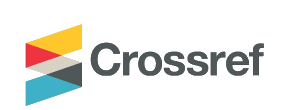Editorial: TEN STARS Special Issue
DOI:
https://doi.org/10.21153/jtlge2019vol10no1art849Abstract
This special issue was produced by the TEN-STARS network, an international network of tertiary staff, students, graduates and employers dedicated to furthering research and practice related to graduate employability. The Employability Network, was formed at the 2018 STARS conference (www.unistars.org) in response to shared interests that are very much aligned to those of the Journal of Learning and Teaching for Graduate Employability. It is therefore with great pleasure that we introduce the Journal’s first special issue, which is also the network’s first collaborative output.
The first issue of the Journal of Teaching and Learning for Graduate Employability was published in 2010, ‘as a forum for fostering interdisciplinary dialogue among researchers, teacher scholars, careers staff and industry and professional practitioners concerned about graduate employability’ (Quin, 2010). Almost ten years on, dialogue among those key stakeholders is no less important, and assuring graduate employability remains a challenge that spans international contexts. In fact, with growing global uncertainty related to rapid technological developments and the changing world of work, alongside other equally concerning social and political disruptions, the preparation of graduates to face uncertainty in and beyond the workforce is arguably more important than ever (Oliver & Jorre de St Jorre, 2018). Fortunately, thanks to the dedication of many, and platforms such as this Journal, there is now an expansive and growing body of research and evidence based practice that can be drawn upon - to design, question, and redesign - teaching and learning for graduate employability.
Universities and academics are often at the centre of discourse about graduate employability, but in reality, concerns and responsibilities are shared more broadly amongst: leaders of tertiary institutions (university and non-university providers); academics in and beyond traditional faculty roles; and other staff who contribute to the student experience and graduate outcomes through diverse roles (such as those that contribute to career learning services, learning design, and student support, to name just a few). Students, graduates, employers and professional associations, as well as government and quality assurance agencies, are also key stakeholders, whose influence and perspectives are essential to developing effective strategies (Kinash, Crane, Judd, & Knight, 2015; Kinash, et al., 2015). With this in mind, the TEN-STARS network was convened by Professor Shelley Kinash, to encourage and support collaboration between all those interested in continuing to discuss, inform, and influence graduate employability. This special issue, was conceived as a way of sharing some of the network’s diverse and collective expertise with a broader audience, who are also invited to become part of our network (https://tenstars.graduateemployability.com/).
All of the papers in this TEN STARS Special Issue are empirical, theoretically grounded and richly informed by the growing body of published employability literature. The roles and experience of our contributing authors are diverse, as are their research questions, methods and methodologies. However, all of the inquiries shared have been designed to impact graduate employability, so they are all contextualised to tertiary education, and provide recommendations for further research and efficacious practice related to learning and teaching for employability. Importantly, none of the approaches examined are bolt-ons (requiring already busy students to do more). Rather, authors have focussed on deeply considered approaches to designing and refining the tertiary educational experience, so that employability and careers perspectives are embedded in the student learning experience, and deeply contextualised to disciplines.
Metrics
References
KINASH, S., CRANE, L., JUDD, M.-M., & KNIGHT, C. (2015). Discrepant stakeholder perspectives on graduate employability strategies. Higher Education Research & Development, 35(5), 951-967. doi:10.1080/07294360.2016.1139555
KINASH, S., CRANE, L., JUDD, M.-M., MITCHELL, K., MCLEAN, M., KNIGHT, C., … SCHULZ, M. (2015). Supporting graduate employability from generalist disciplines through employer and private institution collaboration. Report prepared for the Office for Learning and Teaching, Australian Government.
OLIVER, B. & JORRE DE ST JORRE, T. 2018. Graduate attributes for 2020 and beyond: recommendations for Australian higher education providers. Higher Education Research & Development, 37, 821-836.
QUIN, R. 2010. Editorial. Journal of Teaching and Learning for Graduate Employability, 1, 2-12.











